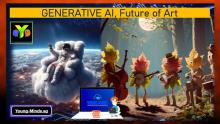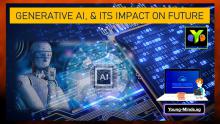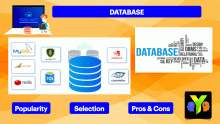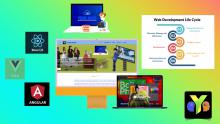The Robotic Revolution: Exploring the Transformative impact of AI on Human Life
In general, humans have a broad range of abilities that are difficult for AI and robotics to replicate, such as creativity, emotional intelligence, and physical dexterity. However, AI and robotics excel in certain areas, such as mathematical calculations, data analysis, and repetitive tasks that require precision and accuracy.
Furthermore, the capabilities of AI and robotics are continually evolving and improving, so it is possible that they may surpass humans in some areas in the future.
Ultimately, it is important to recognize that humans and AI/robotics have different strengths and weaknesses, and that each has a unique role to play in various industries and fields.
There are several areas where robotics and AI have taken over some tasks traditionally performed by humans. Some examples include:
- Manufacturing: Robotics have been used in manufacturing for decades to perform repetitive and precise tasks, such as assembly line work, painting, and welding.
- Transportation: Autonomous vehicles, such as self-driving cars, trucks, and drones, are becoming increasingly common and have the potential to revolutionize the transportation industry.
- Finance: AI is being used in finance for tasks such as fraud detection, credit scoring, and investment analysis.
- Healthcare: Robotics are being used in surgery and rehabilitation, while AI is being used for tasks such as medical diagnosis, drug discovery, and personalized treatment recommendations.
- Customer service: Chatbots and virtual assistants are increasingly being used in customer service to answer basic queries and provide support.
- Agriculture: Robotics are being used in agriculture for tasks such as planting, harvesting, and crop monitoring.
It's worth noting that while AI and robotics have taken over some tasks, there are still many areas where humans are needed, such as creative fields like art and music, as well as jobs that require empathy and interpersonal skills.
The coexistence of humans, robotics, and AI is essential for a bright future. Here are some ways in which they can work together:
- Collaboration: Humans, robotics, and AI can work together collaboratively to achieve better results. For example, a robot may perform a task that is difficult or dangerous for a human, while the human provides oversight and decision-making.
- Augmentation: AI and robotics can augment human capabilities, making us more efficient and productive. For example, AI can help doctors diagnose illnesses by analyzing medical images, while robotics can assist with physical tasks in healthcare.
- Training and education: Humans can train robots and AI systems, while also being trained on how to work with them. This can help to ensure that humans and machines are working together effectively and safely.
- Ethical considerations: As AI and robotics become more advanced, it is important to consider ethical implications and ensure that they are being developed and used in ways that align with our values and principles.
- Reskilling and upskilling: As some jobs are automated or taken over by machines, it is important for humans to reskill and upskill to stay relevant in the job market. This can involve learning new skills or transitioning to roles that require more human skills such as empathy, creativity, and critical thinking.
Overall, the key to a bright future is to find ways for humans, robotics, and AI to work together in a way that maximizes our strengths and minimizes our weaknesses.









